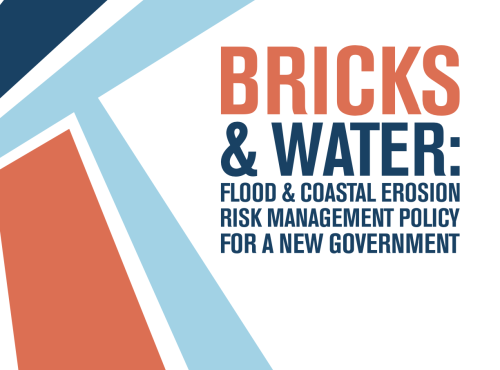The Circular Economy and the Built Environment
The circular economy has been at the forefront of policy advisors and practitioners alike in the last few months, culminating with the launch of ‘Closing the loop – an EU action plan for the Circular Economy’(1) on 2nd December 2015. This document is designed to forward plans to 2030 with an ambition of boosting ‘the EU's competitiveness by protecting businesses against scarcity of resources and volatile prices, helping to create new business opportunities and innovative, more efficient ways of producing and consuming.’
What does this mean for the already environmentally focused built environment industry? In reality, it means a refocus and move towards new methods of designing, planning, constructing and dismantling, essentially the move to a holistic circular economy consideration.
Construction and demolition waste is amongst the biggest sources of waste in terms of volume and weight across Europe, but this is product of an existing system that has seen focus placed on profit over environment, supported by a waste industry that has yet to fully embrace material value. We have had initiatives such as the site waste management plans (SWMP’s), which I had pleasure in being part of the Pathway to Zero waste (PTZW) board that found construction sites to trial these nearly ten years ago. These worked and within 2 years I was talking to major contractors who had site teams competing to see who could get nearest to 100% on recycling. The SWMP’s didn’t just highlight opportunities for recycling, they also looked at the whole cost of waste, everything from the cost of purchasing materials to throw them away, to environmental impact of different materials. The removal of the requirement to have these by the government was a retrograde step, although many contractors that still use the SWMP’s.
For me, the SWMP’s are one of a series of assessments that need to be undertaken at a master planning stage that will allow for consideration of whole-life or circular economy impact of that development. To define a circular economic development, I believe that the supply chain for that project; the architects, material purchasers, developers, facility managers, operators, financiers, electrical, mechanical and civil engineers and potential users need to be involved in the final design of the programme. This will mean longer lead-in times to begin with, but will allow for consideration of leasing of materials rather than purchase, fittings that allow for dismantling and reuse, flexible spaces that will extend the lifetime of the development and design that will allow for maintenance.
Focusing on one of the main challenges for the built environment - new housing - the Mayor’s London Plan (2) projects that by 2036 there will be an additional 1,000,000 households living within the Greater London area. The vast majority of the required new homes will be medium to high-density developments, in other words: flats. What will be the legacy of this late Elizabethan era, to build a housing stock that is short term and profit focussed, or a holistic suite of developments that will have our grandchildren extolling the vision of circularity? Personally I would like to have the latter legacy, but the only way we will achieve that is to work together with a revised combined vision.
Given that it’s that time of year, I hope you have a very merry Christmas and a wonderful new year.
Footnotes
(1) http://ec.europa.eu/priorities/jobs-growth-investment/circular-economy/docs/communication-action-plan-for-circular-economy_en.pdf.
(2) As updated by the ‘Further Alterations to the London Plan’ (FALP) in March 2015.




